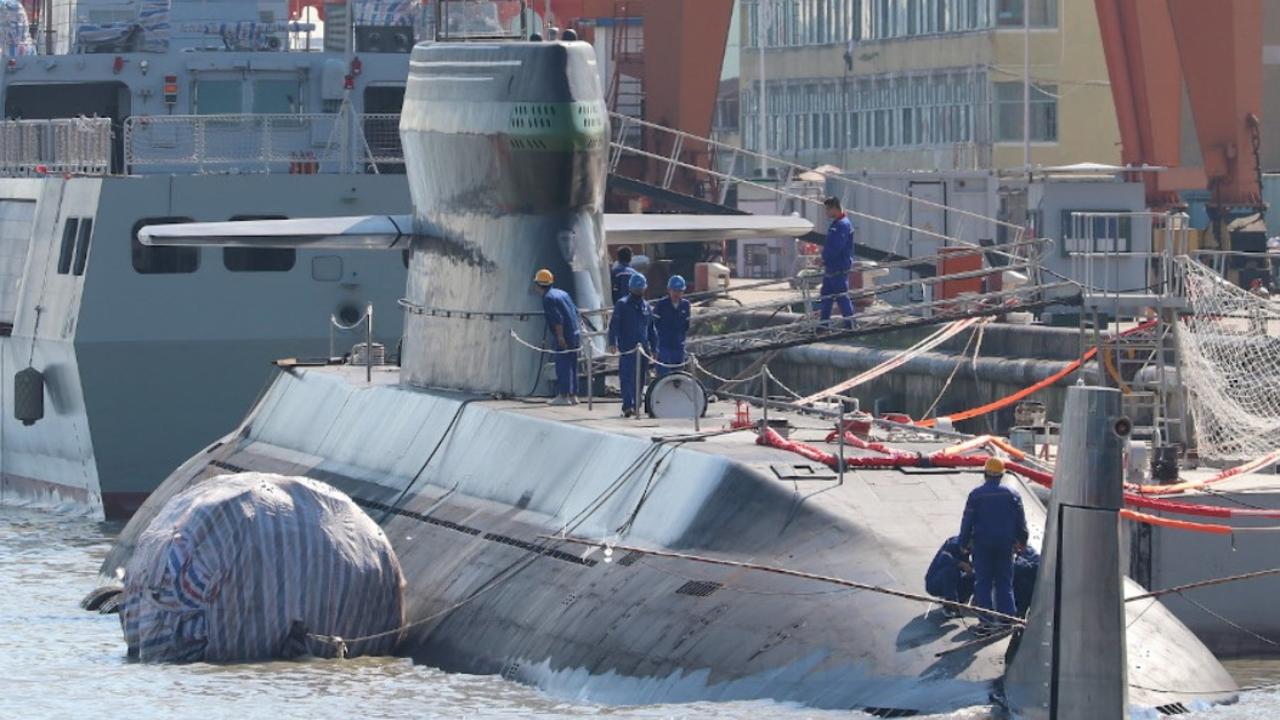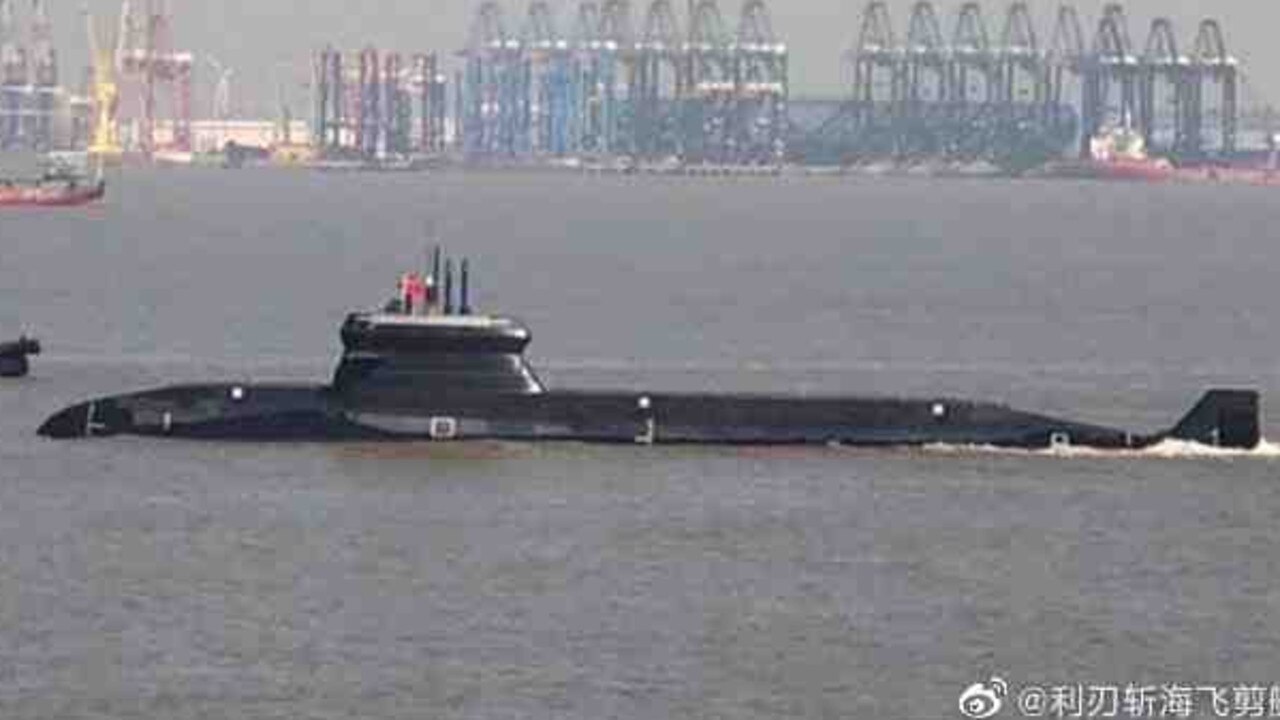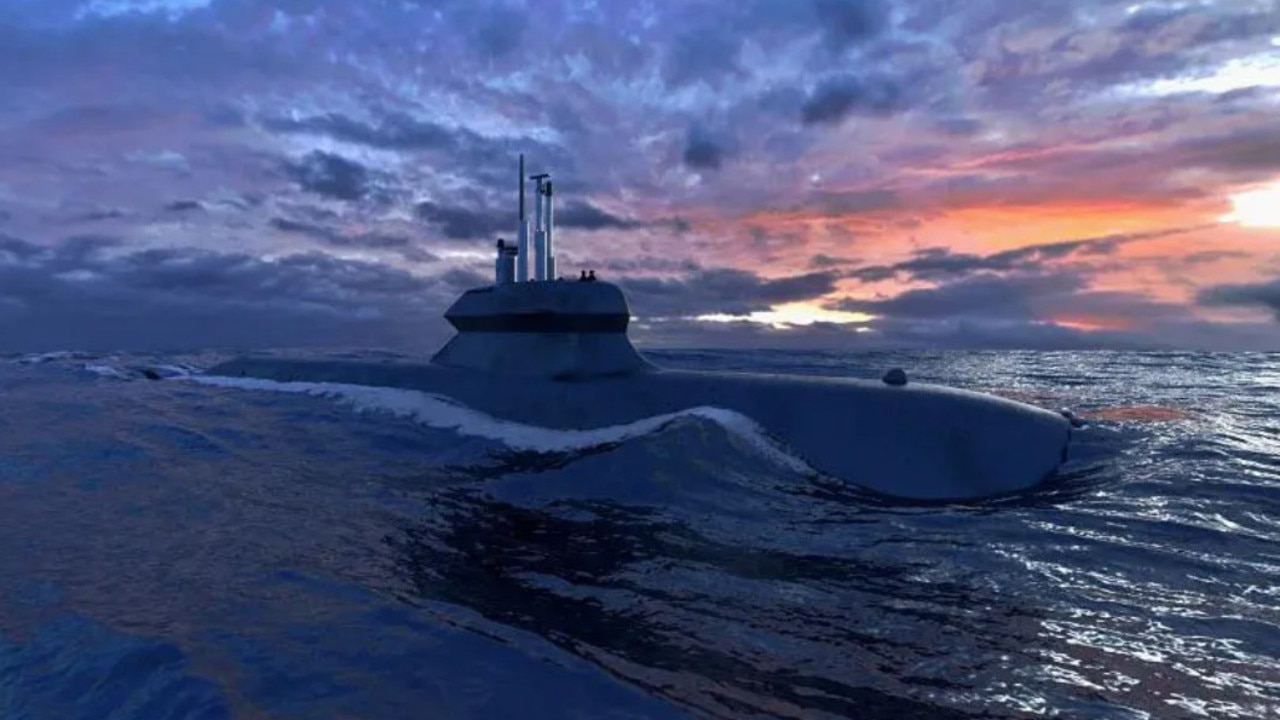China unleashes newest attack submarine off Taiwan coast
It’s an area where Australia falls embarrassingly behind – and now China has stationed its latest attack submarine off Taiwan.
As Australia’s replacement submarine program continues to languish amid a minefield of political failures, China’s latest design has just been deployed off the coast of Taiwan. And it may reveal the crucial role of such stealthy weapons in Beijing’s battle plan.
The strange new submarine was first spotted in satellite photographs last year by naval analyst H.I. Sutton and reported in Naval News.
Last month, it was formally commissioned as an operational unit of the People’s Liberation Army Navy (PLAN) and deployed to China’s East Sea Fleet. “This fleet faces off against Taiwan in a direct sense, being responsible for that area of operations,” Mr Sutton reports.

As with all of China’s military, the submarine force is undergoing rapid expansion and upgrade. But Beijing is putting particular emphasis on smaller, diesel-electric designs most suited to operating in the shallower waters of the East and South China Seas.
According to a recent Brookings Institution think-tank report, that fits with one possible future conflict scenario – a blockade of Taiwan’s ports.
Beijing may hope to starve the independent island democracy into submission, and force it to accept Communist Party rule.
“To minimise China’s own vulnerabilities and deny Taiwan good options for an immediate response, PLA attack submarines, rather than surface ships or aircraft, might be the principal assets employed,” writes strategic analyst Michael O’Hanlon.
And minimising risk appears to be what the new Chinese submarine is all about.
It has a distinctive new conning tower (or sail). Instead of being streamlined to improve water flow like most other designs, it’s angular and faceted. This suggests a new radar or sonar deflection technology to reduce the threat of being detected.
And that means the new submarine can likely operate for extended periods and closer to hostile opponents.
Silent service
“Its exact designation is not known (China does not feel the need to tell us!)” says Mr Sutton. “But Western analysts believe that it is the Type-039C or -D.”
And unlike Australia’s submarine program, the design, development and construction of this new type has proceeded at pace.
“It has now been commissioned as an operational boat, just over a year after launch. This is very fast for a new class of submarine,” he adds.
Part of the reason for this is that it represents an evolution – not a revolution – in China’s submarine design.
It appears based on the Type-039 (Yuan class) hull that first entered service in 1998. Chinese state-controlled media reports the new version represents a significant upgrade over the original.
“This type was equipped with more than 60 per cent of newly researched and improved equipment and underwent system reconfiguration,” Wuchang Shipbuilding yard deputy director Xie Rui reportedly said.

The most obvious element is the shape of its sail.
It houses periscopes, radars, communications arrays and sensors. In diesel-electric submarines, it also contains an exhaust pipe and a “snorkel” to bring air to the engine.
This need to recharge batteries is a severe danger to such an otherwise small, silent submarine. Surveillance aircraft – such as the Australian P-8 Poseidon dangerously intercepted by a Chinese fighter over the South China Sea earlier this year – can spot it with radar long before it can spot them.
Nuclear-powered submarines, such as those Australia now hopes to receive in the 2040s, don’t suffer this risk.
A stealthy sail, however, would allow the Type 39C/D to leave port and travel the hundreds of miles to its destination surfaced with less of a chance of being detected, Mr Sutton concludes.
“Overall, China retains a numerical and technological edge in submarines. This new design adds to this, showing that China is continuing to evolve and improve its non-nuclear boats.”
War plan
China has the world’s largest fleet of diesel-electric submarines. Many are fitted with air-independent chemical packages that allow the diesel engines to run for a time while still deep under water.
Whether the new 79-metre-long submarine utilises these bulky systems or relies on the much-improved capacity of modern lithium-ion batteries (or both) remains unknown.
Mr Sutton says it is now working alongside older Yuan class boats out of the Daxie Dao Submarine Base closest to Taiwan.

That means they can get to their intended area of operation as quickly and efficiently as possible.
“China would use its attack submarines as the main lethal instrument of a blockade, targeting ships going in and out of Taiwan’s ports with torpedoes and anti-ship missiles,” predicts Mr O’Hanlon. “Taiwan would be very hard pressed to challenge these Chinese submarine operations, unlike a situation in which China uses surface ships or aircraft.”
Beijing would also see the scenario as attractive.
It won’t put “loyal” Chinese citizens at risk. Embarrassing incidents involving foreign civilians would be avoided. And visible evidence of any losses and failure is greatly reduced.
“The United States and Taiwan would presumably respond with a large-scale convoy escort operation, plus an anti-submarine warfare campaign,” Mr O’Hanlon adds. This would almost certainly be forced to operate in a narrow corridor to the east of Taiwan, where deep water and distance make submarine operations more difficult.
“China wins if it destroys enough ships that the allies run out of replacements and can no longer maintain the necessary length of the pickets; the allies win if and when they sink all of China’s submarines,” he concludes.
Jamie Seidel is a freelance writer | @JamieSeidel




